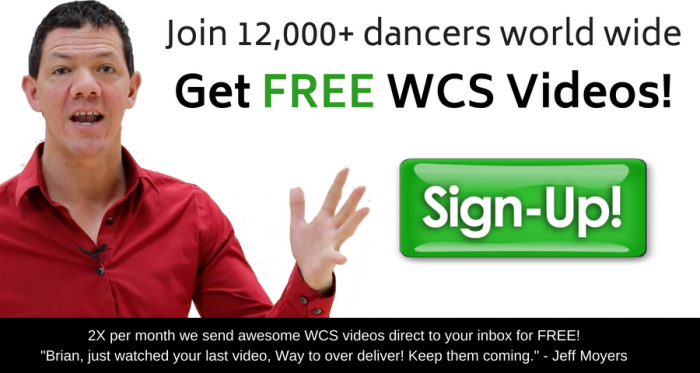Great dancers are always in control of their bodies, and that requires knowing the limits of how far they can go for certain movements. Today, we’re going to look at the anchor with an eye towards learning where your body should be at the end of every pattern.
The goal of this exercise is to train yourself what the right body position is for yourself. No one’s body is built exactly like another person, so you need to learn what looks and feels good on you. Once you have found that position, you can train yourself to recognize when you’ve reached that position, and gradually learn to control your movement so you never get beyond your own limits.
The Drill: With a partner, set up in front of a mirror and get into an open position anchor, like you would be at the end of most patterns. Check your body positioning: posture, foot placement, hand height, and any other criteria you have been taught for your anchor. Once you are satisfied that you and your partner are in a good position mechanically, look in the mirror. Are you happy with the visual created by this position? You may notice that your body positioning wasn’t quite correct—maybe you were arching your back a little and you didn’t realize it without the side view. Go ahead and adjust. Are you too far away from each other so that your arm looks overextended, or your shoulders are rounding forward? Move closer and fix it.
Once you have created the right visual, you need to train yourself to find that position consistently, without a mirror. One of the best indicators for distance is the feeling of stretch in your back, on the connected side. Pay attention to the side your back around elbow height and a couple of inches above: this is where you should feel the stretch in your lats and your rotator cuff muscles that keep your arm from being pulled forward. How much work are these muscles doing? Train yourself to remember this sensation, because what you are feeling right now is your personal maximum extension.
To habituate this sensation, release the connection with your partner, shake out your body, and then attempt to return to that position and use the mirror to check yourselves. For now, don’t try to get into the position from an actual pattern: that adds a degree of difficulty because you might need to adjust your pattern spacing, and right now you’re trying to learn a specific distance and position rather than how to get to that position. Keep repeating this exercise until finding the right amount of stretch through the side of your back is instinctive.




 Brian & Megan
Brian & Megan